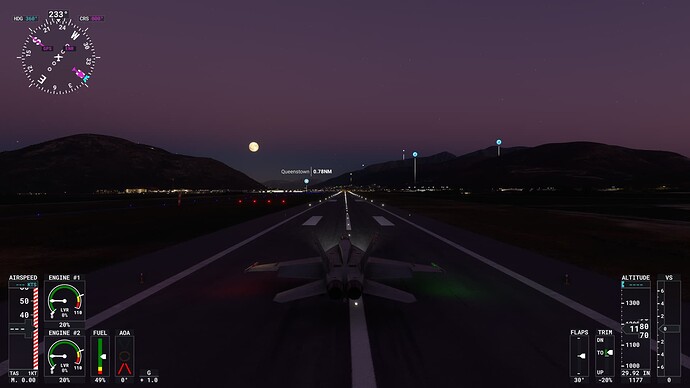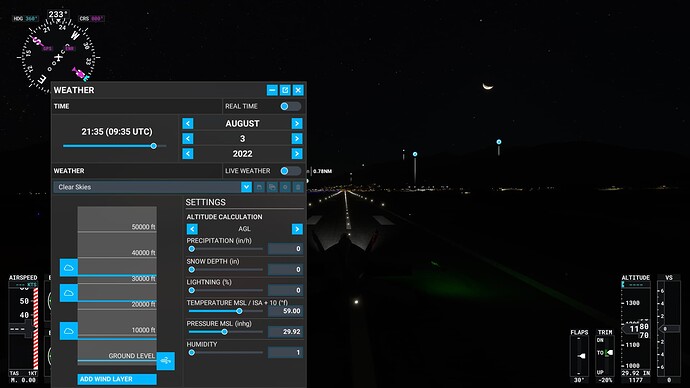It gets even more complicated on the Equator between moon rise and moon set.
I remember that and the controversy.
It did bother me some. However, spacecraft do orbit that way to take advantage of the Earth spin to assist in getting Delta V. But the speed isn’t so fast as you’d see it like that.
2 dimentional thinking applied to a 3 dimentional problem
Here is a screenshot from New Zealand, showing the moon upside down:
They have at least got the crescent the right way:
I know it doesn’t bother many people and I’ve met more than one person who has migrated hemispheres and not even noticed themselves after many years!
This is hilarious ! I play the sim, read this forum and watch youtube videos about flying to escape the awful real news cycle. Topics like this give me such joy… I challenge the community to check if Mars is the right way up ?
It appears that most views expressed in this thread have an element of truth regarding how the moon should look in real life.
Assuming the Moon’s orbital plane is above the equator, and ignoring the Earth’s tilt …
If you are very near the north pole, the moon’s north pole will be “up” and the moon itself will be to your south. The moon stays close to the horizon.
If you are very near the south pole, the moon’s north pole will be “down” and the moon itself will be to your north. The moon stays close to the horizon.
If you are very near the equator, in either hemisphere, and the time is near moonrise, the moon’s north pole will point to your left (North) and the Moon will be to your East. The moon will pass over your zenith. At the zenith the Moon’s North pole will point to your north.
If you are very near the equator, in either hemisphere, and the time is near moonset, the moon’s north pole will point to your right (North) and the Moon will be to your West. The moon will pass over your zenith. At the zenith the Moon’s North pole will point to your north.
As you move further from the “very near”, then the moon starts to make arcs and it’s north pole will appear to rotate as it progresses from Moonrise to Moonset. The height of the arc and degree of rotation depends on your relative latitude.
Hopefully, we can all agree that the moon doesn’t suddenly flip from one orientation to another as the observer magically moves that infinitessimal distance from being North of the Equator to South of it.
As mentioned by @anon69344611, Can the Moon be upside down? | The Planetary Society has a good discussion that describes both polar and equatorial situations. Unfortunately very few of us live at the Poles and the mid-latitudes where we do tend to live are even more complex than the equator.
The question remains (and I have not checked), does MSFS work as described in all situations described here?
Interesting observation!
I’ve closed this topic as there is now a bug report thread for this issue created by the Topic Author, to avoid splitting future discussions:
Feel free to continue the discussion over on that thread.

